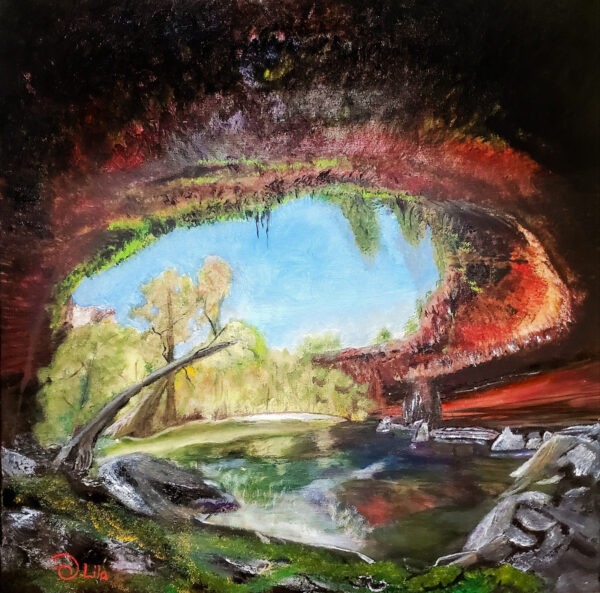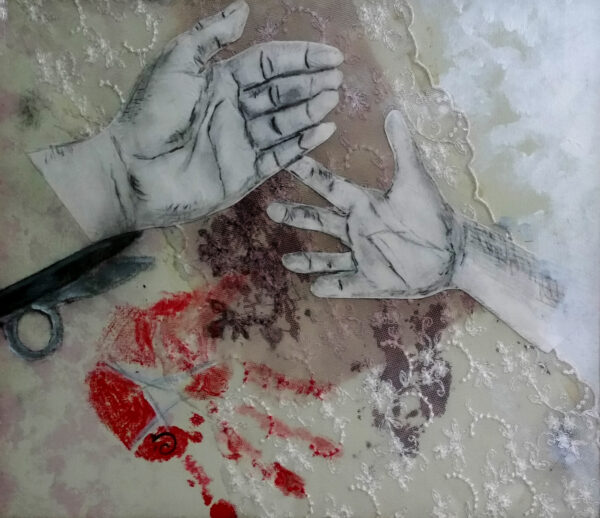
by Jerry Slayton
Our March 2024 Artist of the Month is Lila Milam-Kast. Lila has been our intern for six weeks now, and in that time, we’ve had many opportunities to talk “art.” Though Lila is a multi-medium artist, it came out in our conversation that she considers her primary medium to be color. And in looking through her paintings I would have to agree. I’m drawn to her use of light and shadow, and the drama created through complementary and analogous hues.

In her oil painting “Hamilton Pool” (above), she contrasts dark shadowy reds and oranges in the cave at the top of the painting with the pastel blues and greens of the sky and ground. The composition evokes a sense of emergence as the light emerges from the dark, or lies just beyond the dark. In reflecting on this piece, Lila recalled that she started it during the 2020 COVID lockdown, a time when we were all a bit uneasy as to what the future held. For her, this painting became a metaphor for that unease, but also for the reemergence of nature during that time. The color in the painting builds the mood or soul of the piece. It’s both naturalistic and symbolic. Nicely done!

Lila’s work can also take a more diaristic and directly personal approach. In her piece “Reaching for Help” (above), two delicately-drawn hands are depicted in charcoal as they gesture towards one another. The tones of the background are subtle and come from the combination of ornate fabrics collaged to the surface. Color in this piece is reserved for a bright burst of red, a handprint that seems half-present. This collage, like her Hamilton Pool painting, is evocative of many emotions. A piece like this speaks to the other side of why Lila makes art, the healing side. I think this can best be summarized in her own words:
“Art heals anxiety, suffering, and depression. It brings people together, helps them communicate when words will not suffice, and forms bonds. Ultimately, it brings peace to the soul, if only for a few moments of distraction, by simply allowing the mind to rest for a little while. Science has shown this. Psychology shows this. People have felt this for a very long time. Ask a doodler why they doodle, and they will tell you the same thing. Why do we do art? Because it feels good.
“I’ve always done art as long as I remember, but to be honest, a lot of it stopped when I got it completed in my head and not […] onto the paper. When I got sick, I went to sleep, deep down inside, and only recently have I begun to enjoy putting my thoughts back down and working out the problems of the making of it. That energy, that joy, is a process of puzzling out how something works. It takes a mindset that a chronically ill person with very few spoons often doesn’t have. I understand that I lost that now. I forgive myself for it and have returned to making art again.”
We are glad to have you back, Lila. Good luck on all your future art and career endeavors.
